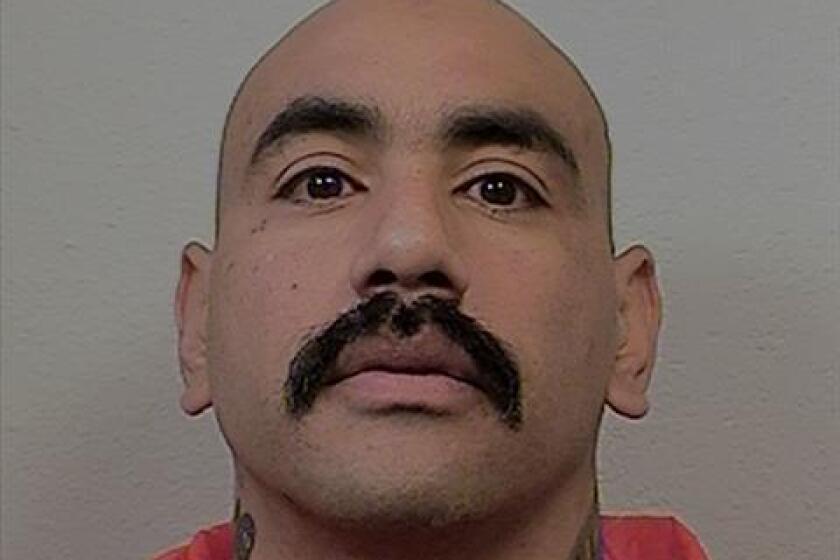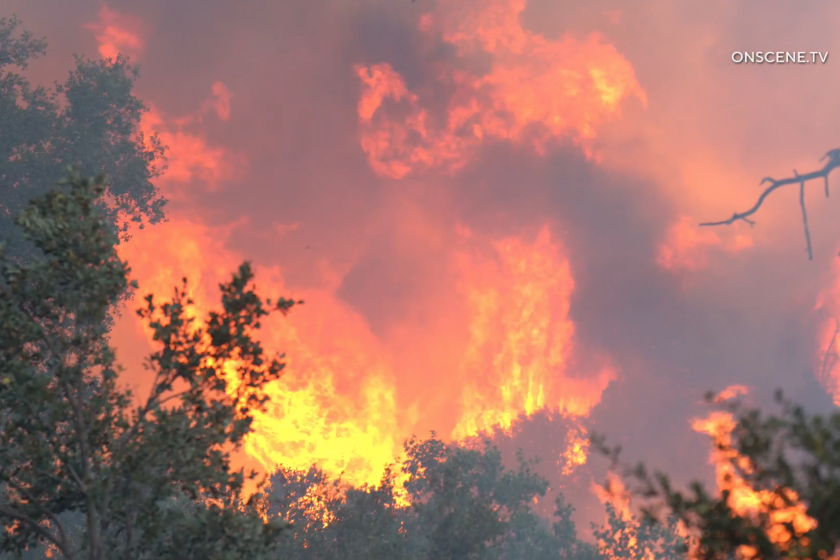Caltrans Asked to Brush Up on Graffiti Cover-Up Colors
Dear Street Smart:
Caltrans has spent big bucks putting up customized, two-toned sound walls along the freeways that have become drawing boards for graffiti writers. Those responsible for covering up the graffiti sometimes ignore the color of the barriers and use pink or gray paint on a brown wall. Or they use colors other than gray on concrete.
These cover-ups look worse than the graffiti! Who’s responsible? Can we give them a test for color-blindness?
Mike Bantuveris, Northridge
Dear Reader:
The folks at Caltrans say, no, their workers don’t need an eye doctor.
All they need to eliminate this patchwork cover-up problem is more money to hire more cleanup crews, each carrying enough paint cans to match any blemished wall they encounter.
As it is, Caltrans believes its workers are doing the best they can to keep the pesky, growing graffiti plague at bay.
Agency spokesman Joe Shaw says Caltrans spent $3 million last year for graffiti removal in Los Angeles and Ventura counties alone. The state’s cleanup crews painted over about 20 million square feet of marred surfaces--four times the 5 million square feet they dealt with just three years ago.
These crews “carry four or five basic colors of paint, but it’s hard to get an exact match every time, due to the variety in the colors of the natural stone used for the walls,” Shaw says.
“If the crew runs out of one color of paint, they may use one that doesn’t quite match, just to cover the taggers’ marks, knowing full well that the next time they come by, they’ll be painting over new tagging marks, and they can try to match shades at that time.”
(Sort of sounds like the Caltrans cleanup crews have become pessimistic about the prospects for keeping sound walls clean for any length of time.)
*
Dear Street Smart:
I would like to know why there are “No Left Turn” signs posted on Plummer Street at Baden, Shoup and Farralone avenues in Chatsworth. If you’re driving east on Plummer, these signs say you can’t turn left from 7 to 10 a.m. or from 4 to 7 p.m.
To go to and from work and to visit Chatsworth Park, I have used Valley Circle Boulevard, which leads into Plummer, then turned left on Baden to continue north.
I prefer this route over Topanga Canyon Boulevard, which is busier and far less scenic.
It is my understanding that the homeowners in an affluent Chatsworth neighborhood requested and received the no-turn signs.
These are public--not private--streets. Why should I have to go out of my way to get to and from work?
Ilene Czachow, West Hills
Dear Reader:
Your understanding is correct. These signs--along with “No Right Turn” signs for southbound drivers on Baden, Shoup and Farralone--were posted by city crews in October, 1992, at the request of Councilman Hal Bernson.
He was responding to petitions from residents living north of Plummer, who didn’t want commuters cutting through their neighborhood. Baden had become a popular shortcut for drivers heading north toward Lassen or Devonshire streets or on their way to the Simi Valley Freeway.
The city feared that a turning restriction on Baden alone would just bump the problem over a block, so signs were also placed on Shoup and Farralone, which parallel it.
Is is legal to prevent cars from turning onto public streets during certain hours?
It is, says Ray Wellbaum, a city transportation engineer for the West Valley. “It’s a quality-of-life issue within the neighborhood,” he explains. “The (city’s) master plan of highways intended that commuters use major and secondary highways, rather than local residential streets.”
Nevertheless, you’re not the only one who dislikes these signs. Even some of the people living near Plummer have complained that the signs prevent them from taking the shortest route home or to school.
Your best bet is to contact Bernson’s office, which has been fielding complaints about traffic problems along this street. The signs will probably not be removed unless the councilman wants it to happen.
*
Dear Street Smart:
I am tired of seeing cars out on the road producing excessive exhaust smoke, which is not only an eyesore, but obviously bad for the environment.
Is there a number I can call to report such vehicles?
Aimee Morein, North Hollywood
Dear Reader:
There sure is such a number, complete with catchy words corresponding to the key pad on your phone.
Call 1-800-CUTSMOG, and you’ll reach a 24-hour service staffed by those guardians of the stuff we breathe, the South Coast Air Quality Management District.
Bill Kelly, a spokesman for the district, says you should have the following information handy: the type of vehicle (auto, truck, bus), the license plate number, what state the plate is from, the make of the vehicle (Ford, Chevrolet, etc.), what day and time you saw the offender and which street or freeway the vehicle was on.
“We send a letter to the registered owner of the vehicle saying that it has been spotted smoking,” Kelly says.
The letter reminds the owner that excessive vehicle exhaust smoke is illegal, and that the driver could be cited by police or the California Highway Patrol.
The district asks recipients to send in a mechanic’s note or receipt, showing that repairs were made. Even though the district has no enforcement powers over smoking cars or trucks, “we get a pretty good response,” Kelly says.
About 10 million registered vehicles are based in the district, which includes Los Angeles, Orange and Riverside counties, plus part of San Bernardino County. That’s a lot of exhaust, and the anti-smog line gets up to 15,000 complaints per month.
But before you turn in that smoking engine down the street, Kelly says, make sure it’s putting out a thick continuous black cloud over an extended stretch of road, not just a light puff or two as it gets started or heads up a hill.
More to Read
Sign up for Essential California
The most important California stories and recommendations in your inbox every morning.
You may occasionally receive promotional content from the Los Angeles Times.










